CE 338 Lab 2023 Fall
Lab 1 Review of Superposition, Thevenin's Equivalent Circuit and LTSpice.
Name: Vann Montoya
Email: bvmontoya@fortlewis.edu
Review of Superposition, Thevenin's Equivalent Circuit and LTSpice.
Introduction
- The purpose of this lab is to review superposition, thevenin's equivalent circuit and LTSpice.
Materials and Methods
- Writing material
- LTSpice
Results
Task 1: Review Superposition and Spice (50 points).
Hand calculation (10 points)
First we want to calculate all voltages and currents in each element in the following circuit by hand using Superposition.

Figure 1: The given circuit problem.
To use superposition, we focus on one source at a time by shorting other voltage sources or disconnecting other current sources.
Here is how I worked the first voltage source V1;
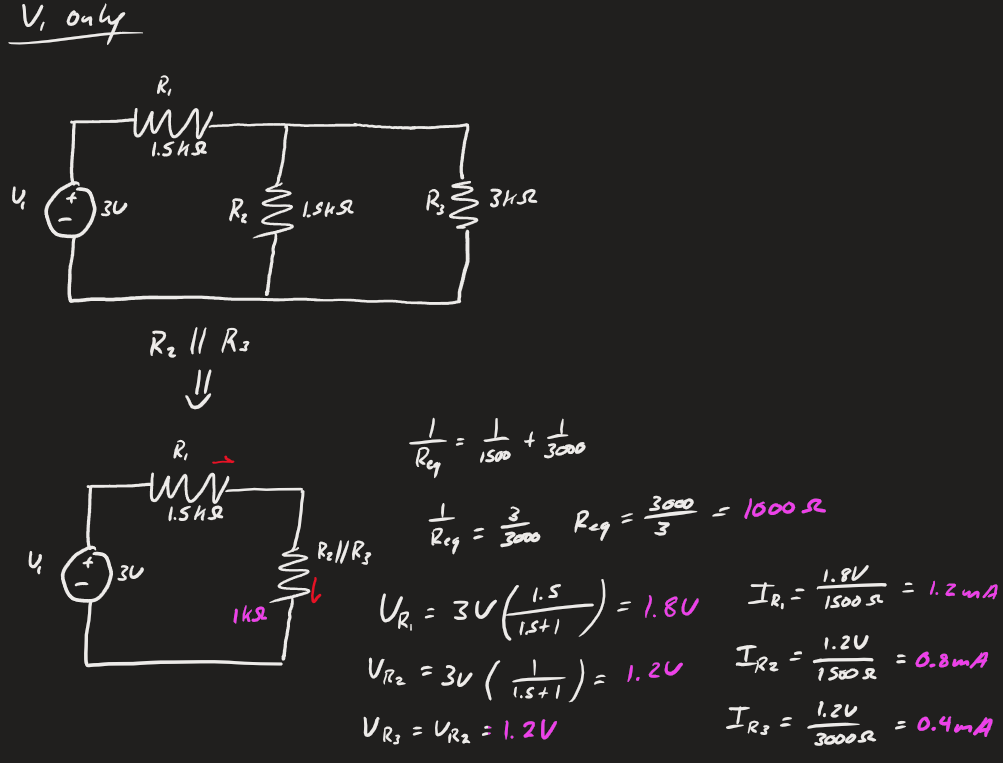
Figure 2: Handwritten work for solving the first portion of the circuit using superposition.
Here is my work for the second voltage source V2:
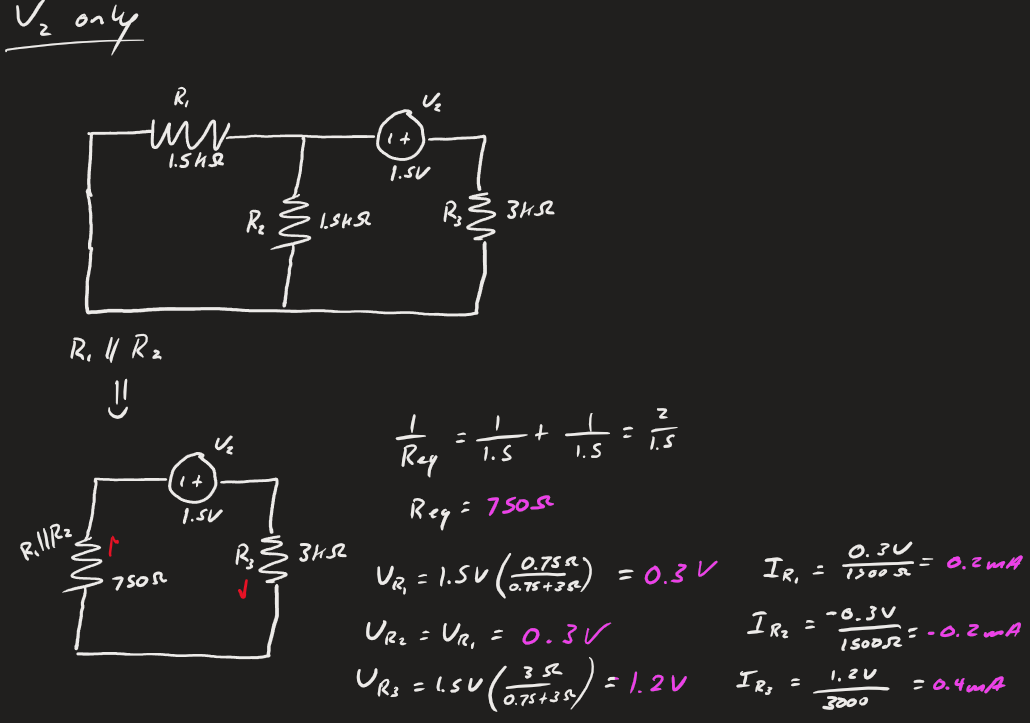
Figure 3: Handwritten work for solving the second portion of the circuit using superposition.
Now, we add our results from both portions:

Figure 4: Combining results from both portions to get all voltages and currents through each element.
Spice code (10 points)
(Build the circuit in Spice code ONLY. Do not use symbols and schematics)
Now we want to use LTSpice to varify the results.
Here is the code used to simulate the circuit:
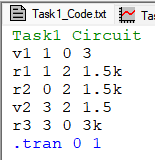
Figure 5: LTSpice code for simulating the given circuit.
Simulation results (10 points)
Here are the voltages and currents from the LTSpice simulation:
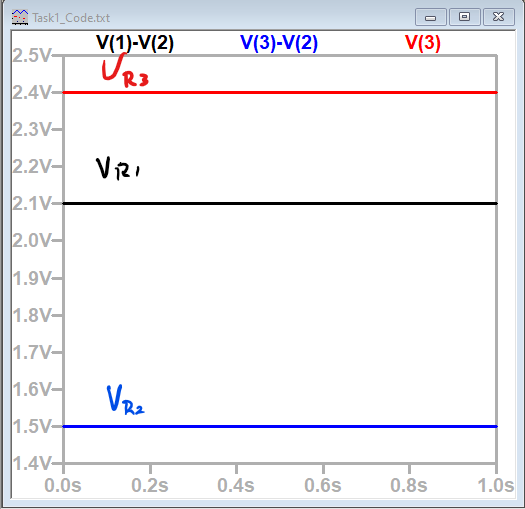
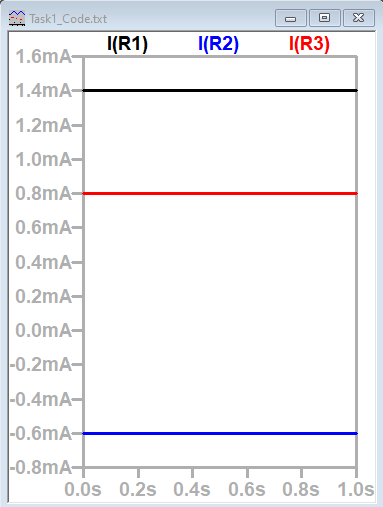
Figure 6: Voltages and currents reported from the LTSpice simulation.
As you can see, the results from the LTSpice simulation match the values found from the handwritten work.
Task 2: Review Thevenin's Equivalent Circuit and RC time delay (50 points).
Hand calculation (10 points)
Here is the is the given circuit we are wanting to find the Thevenin equivalent circuit:

Figure 7: The given circuit to find the Thevenin equivalence.
We need to find the equivalent resistance and equivalent voltage:
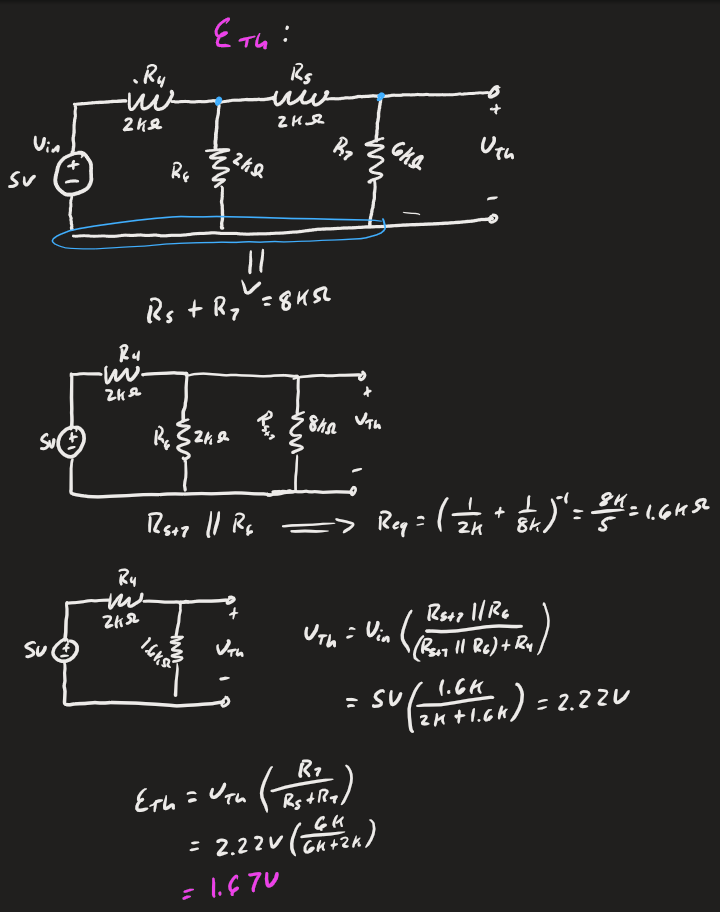
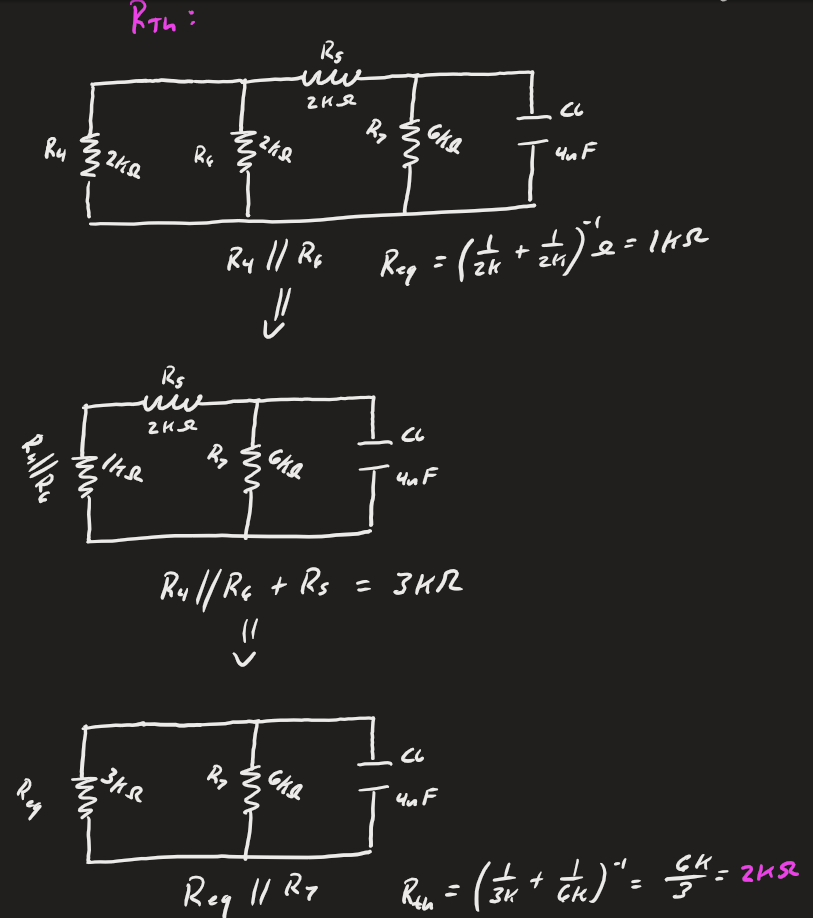
Figure 8: Handwritten work to find the Thevenin equivalent voltage and resistance.
Now, combine:
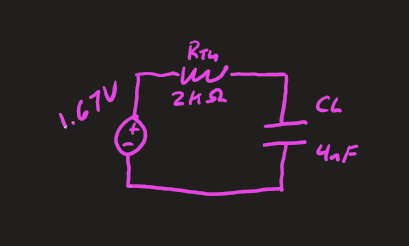
Figure 9: The Thevenin's Equivalent Circuit.
Spice code (10 points)
(Build the circuit in Spice code ONLY. Do not use symbols and schematics)
Here is the code used to simulate the circuit.
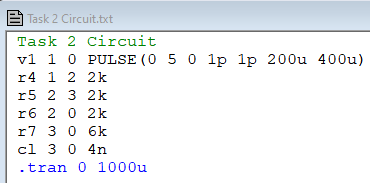
Figure 10: LTSpice code to run the simulation.
Simulation results (10 points)
Here are the results from the simulation.
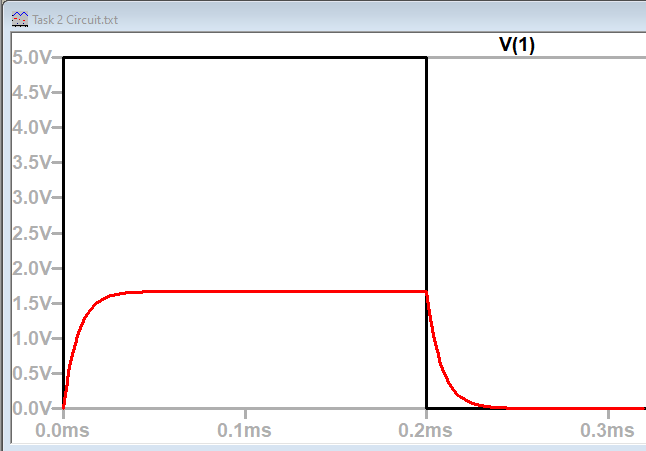
Figure 11: LTSpice simulation results.
Discussion
This lab was a great
review of circuits and LTSpice. Nice introduction to LTSpice code
because prior only dealt with using the symbols and schematics.












